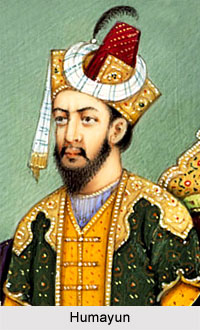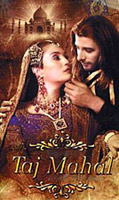 Astrology during Mughal Dynasty formed a rather important element in the decision-making process. The Ptolemic system was the accepted theory of the time. A number of convictions were followed religiously by various rulers and their entire life and administration was based on the advice of the astrologers and the soothsayers. All the events, from birth to the fighting of mighty battles to death were governed by the stars. For instance, the planetary signs prevailing at the time of birth were believed to foretell the future of a king or even a dynasty. The influence of astrology was so deeply ingrained in the Mughals that the dynasty had adopted the fish, a primordial symbol of life, as one of their emblems. The impact and importance of astrology under the various Mughal Emperors is discussed below.
Astrology during Mughal Dynasty formed a rather important element in the decision-making process. The Ptolemic system was the accepted theory of the time. A number of convictions were followed religiously by various rulers and their entire life and administration was based on the advice of the astrologers and the soothsayers. All the events, from birth to the fighting of mighty battles to death were governed by the stars. For instance, the planetary signs prevailing at the time of birth were believed to foretell the future of a king or even a dynasty. The influence of astrology was so deeply ingrained in the Mughals that the dynasty had adopted the fish, a primordial symbol of life, as one of their emblems. The impact and importance of astrology under the various Mughal Emperors is discussed below.
Astrology Under Humayun
When Humayun ascended to the throne in 1530, he divided all the government departments into four categories corresponding to the four elements- earth, air, fire, and water. In the latter category were placed the irrigation canals, which were so vital for the arid parts of the country that they were the concern of the sovereign. In the category of earth came agriculture and architecture; fire encompassed all military affairs and artillery; all other departments, kitchen, wardrobe, hunting animals, etc., came under the heading of air. Each day was dedicated to a planet and the activity it ruled over, and clothing had to match the astral sign. Sunday was devoted to affairs of state and the sovereign`s garments had to be golden or yellow, Monday was for pleasure and recreation and the colour was green, etc. Red signified Mars and the sovereign`s anger. Humayun sat on a throne which represented the sun, and under it was a large circular carpet with the signs of the zodiac all around. The courtiers sat at the foot of these various symbols, Jupiter, Mercury, or whatever, according to their religion or the departments they were in charge of. Humayun died a victim of his passion on Friday, 24 January 1556. He had spent the night on the terrace of his observatory in Delhi, the Sher Mandal, waiting to see the rise of Venus. On his way down he slipped on the stairs and fell, injuring his head. He died three days later.
Astrology Under Akbar
 When Akbar ascended the throne, he immediately put an end to this system and ruled in a more realistic manner. However, belief in astrology was ingrained among the Mughals, and Akbar too relied on predictions. He feared the apparition of an ancestor in his dreams, for that could be an omen of death, or the pardoning of a wrongdoer, for that would be immoral.
When Akbar ascended the throne, he immediately put an end to this system and ruled in a more realistic manner. However, belief in astrology was ingrained among the Mughals, and Akbar too relied on predictions. He feared the apparition of an ancestor in his dreams, for that could be an omen of death, or the pardoning of a wrongdoer, for that would be immoral.
Astrology Under Jahangir
Under Jahangir, astrology gained impetus again. He prided himself on being born under the brilliant conjunction of Mercury-Jupiter-Venus in the sign of Scorpio. He had coins struck showing the signs of the Zodiac along with the date of issue and the titles of the Emperor. These gold Mohurs were distributed from 1020 to 1030 AD. It was said that he rewarded astrologers by paying them their weight in gold. He had been very impressed by them when they correctly predicted the death of his grandmother Hamida Begum.
Astrology Under Shah Jahan
Shah Jahan was said to have been born under the same signs as his ancestor Tamerlane. He was very proud of this. On his grave, alongside that of his beloved wife in the Taj Mahal, is engraved, `He was born a ruler,` However, some opposing courtiers spread the rumour that actually some opportunistic astrologers had moved the occurrence of the birth by some hours, maybe even days or months, in order to obtain this auspicious conjunction. This may explain the uncertainty over the exact date of Shah Jahan`s birth. It is said that Prince Khurram was born the same month as the Prophet and Jahangir, and in the first year of the second millennium. The court astrologers and the chronographs drawn up at the time of his birth predicted that he would attain the `the citadels of glory`.
It is said that Prince Khurram was born the same month as the Prophet and Jahangir, and in the first year of the second millennium. The court astrologers and the chronographs drawn up at the time of his birth predicted that he would attain the `the citadels of glory`.
Astrology Under Aurangzeb
Under Aurangzeb, astrology played a relatively moderate role, being of academic relevance to philosophy and religion and an aid to decision-making for the ruler and administrators. Aurangzeb was somewhat less inclined than some, sometimes believing in and following these practices, sometimes agreeing to the convictions of his followers, and sometimes rejecting them altogether and following a more puritanical religious doctrine. He did adopt the fish emblem when he became Emperor, but merely as a wise gesture, to follow an already accepted custom.
In those days chronographs were taken very seriously. The numbers of the date of birth were taken and, using calculations similar to the esoteric methods previously mentioned, the diviners would ascertain the character, tastes, and destiny of the subject. In the absence of proper laws of succession, these predictions contributed to deciding who was to be the future Emperor. Certain days were supposed to be auspicious days to be born, especially during the months of Shawwal or Shaban, while others were considered not so fortunate.
There have been various instances of the importance given to astrology during the Mughal era. Once, before the rebellion of the Rajput Prince Champet Bundhela, the Emperor Shah Jahan was advised to ride at the head of his troops, otherwise he would be defeated. The astrologers won the confidence of the Emperor when he emerged victorious and the Raja fled into the jungle. Later these same astrologers also warned him of danger. In another incident, in order to ensure the success of his expedition to conquer Qandahar in 1653, Dara Shikoh engaged Yogis to protect him.
The influence and use of astrology was thus rather prominent under the Mughals. Even though there were some, like Aurangzeb, who were quite unpredictable in their attitude towards the role of astrology in the administration of Mughal Dynasty, the role of astrology was nevertheless quite important under the Mughals.



















